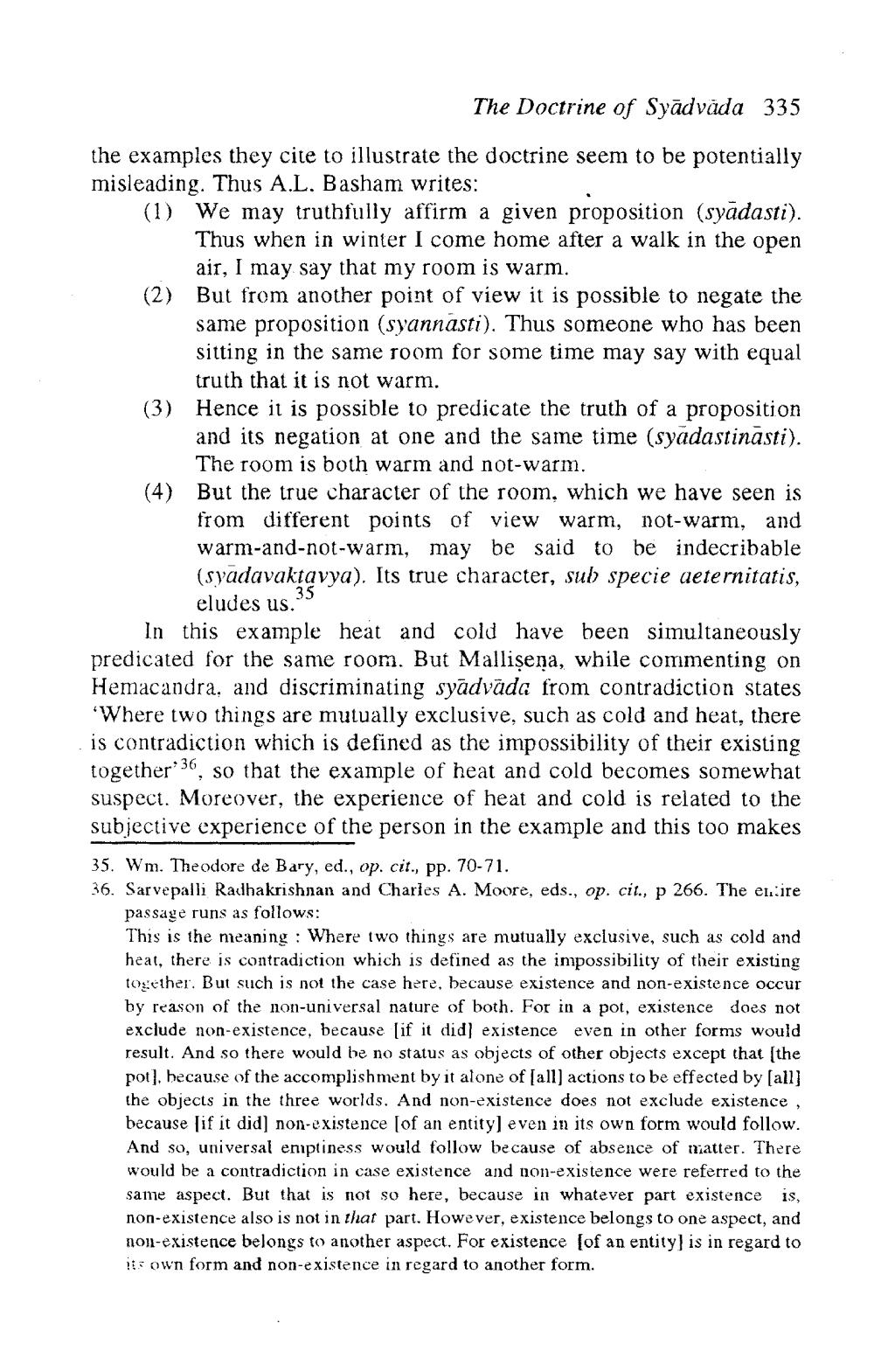________________
The Doctrine of Syādvāda 335
the examples they cite to illustrate the doctrine seem to be potentially misleading. Thus A.L. Basham writes: (1) We may truthfully affirm a given proposition (syādasti).
Thus when in winter I come home after a walk in the open
air, I may say that my room is warm. (2) But from another point of view it is possible to negate the
same proposition (syannasti). Thus someone who has been sitting in the same room for some time may say with equal
truth that it is not warm. (3) Hence it is possible to predicate the truth of a proposition
and its negation at one and the same time (syadastināsti).
The room is both warm and not-warm. (4) But the true character of the room, which we have seen is
from different points of view warm, not-warm, and warm-and-not-warm, may be said to be indecribable (syadavaktavya). Its true character, sub specie aeternitatis,
eludes us.35 In this example heat and cold have been simultaneously predicated for the same room. But Mallisena, while commenting on Hemacandra, and discriminating syadvāda from contradiction states "Where two things are mutually exclusive, such as cold and heat, there is contradiction which is defined as the impossibility of their existing together 30, so that the example of heat and cold becomes somewhat suspect. Moreover, the experience of heat and cold is related to the subjective experience of the person in the example and this too makes 35. Wm. Theodore de Bary, ed., op. cit., pp. 70-71. 36. Sarvepalli Radhakrishnan and Charles A. Moore, eds., op. cit., p 266. The entire
passage runs as follows: This is the meaning : Where two things are mutually exclusive, such as cold and heat, there is contradiction which is defined as the impossibility of their existing together. But such is not the case here, because existence and non-existence occur by reason of the non-universal nature of both. For in a pot, existence does not exclude non-existence, because (if it did existence even in other forms would result. And so there would be no status as objects of other objects except that (the pot], because of the accomplishment by it alone of (all) actions to be effected by (all) the objects in the three worlds. And non-existence does not exclude existence, because lif it did] non-existence (of an entity) even in its own form would follow. And so, universal enptiness would follow because of absence of matter. There would be a contradiction in case existence and non-existence were referred to the same aspect. But that is not so here, because in whatever part existence is, non-existence also is not in that part. However, existence belongs to one aspect, and noll-existence belongs to another aspect. For existence of an entity) is in regard to its own form and non-existence in regard to another form.




